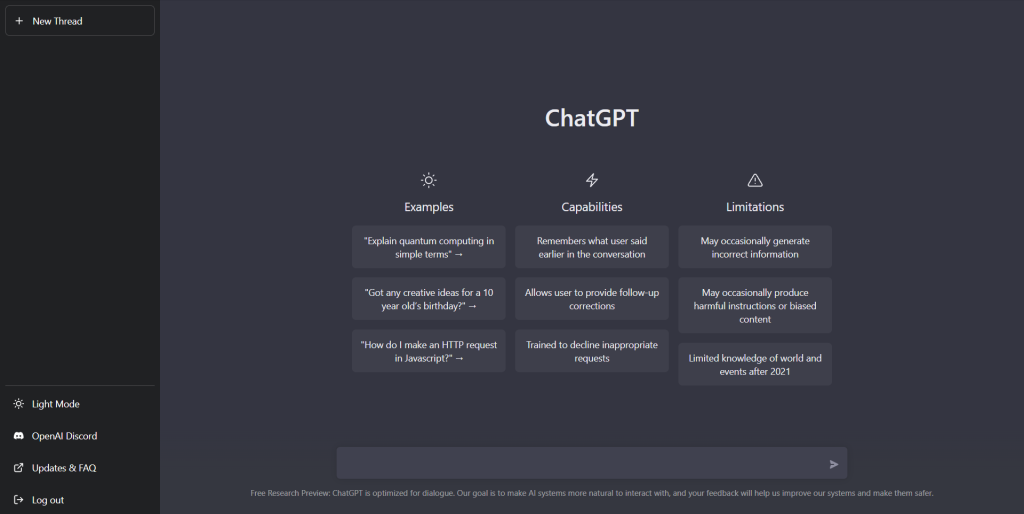What is ChatGPT? How to use ChatGPT?

What is ChatGPT?
ChatGPT is a variant of the GPT (Generative Pre-training Transformer) language model that is specifically designed for generating text in a chatbot-like manner. It is trained on a large dataset of conversational exchanges and is able to generate responses that are appropriate and coherent in the context of a conversation.
What is ChatGPT? How to use ChatGPT?
To use ChatGPT, you will need to have access to the model and be able to run it on a machine with sufficient computational resources. There are several ways to do this:
- One option is to use the OpenAI API, which allows you to access and use a variety of language models, including ChatGPT, through a simple API.
- Another option is to use the Hugging Face library, which provides access to a wide range of pre-trained language models, including ChatGPT. The library allows you to easily fine-tune and use the models in your own applications.
- You can also train your own version of ChatGPT on a dataset of your own choosing. This will require a more in-depth understanding of machine learning and natural language processing techniques, as well as access to a large dataset and the computational resources to train the model.
What is ChatGPT?
Once you have access to ChatGPT, you can use it to generate responses by providing it with a prompt (e.g., the last message in a conversation) and asking it to generate a response. You can then use the generated response in your chatbot or other conversational application.
More about What is ChatGPT?
- Obtain access to ChatGPT: As mentioned above, there are several ways to do this. If you are using the OpenAI API, you will need to sign up for an API key and install the API client library for your programming language of choice. If you are using the Hugging Face library, you will need to install the library and make sure you have the necessary dependencies. If you are training your own version of ChatGPT, you will need to have a machine learning framework (such as PyTorch or TensorFlow) installed and set up, as well as access to a large dataset and the necessary computational resources.
- Pre-process your data: If you are using ChatGPT to generate responses in a chatbot or other conversational application, you will need to have a dataset of conversational exchanges to use as input. This dataset should be in a format that ChatGPT can process, such as a list of prompts and responses. You may need to clean and pre-process your data to make it suitable for use with ChatGPT, such as by lowercasing all the text and removing special characters.
- Generate responses: Once you have access to ChatGPT and your data is prepared, you can use the model to generate responses. This typically involves providing ChatGPT with a prompt (e.g., the last message in a conversation) and asking it to generate a response. You may need to fine-tune the model’s parameters or provide additional context to get the best results. The generated response will be a string of text that you can use in your chatbot or other application.
- Incorporate ChatGPT into your application: To use ChatGPT in a chatbot or other application, you will need to integrate it into your codebase. This will typically involve writing some code to send the prompt to ChatGPT, receiving the generated response, and use it in your application. The specifics of this will depend on the programming language and framework you are using, as well as the details of your application.
What is ChatGPT
It is difficult for me to determine the most searched keywords related to this, as search trends can change over time and vary depending on the location and language of the searcher. However, some common keywords related to ChatGPT that you may see include:
- “chatbot GPT”
- “conversational AI”
- “language model chatbot”
- “GPT chatbot”
- “GPT-based chatbot”
These keywords may be used by people who are interested in building chatbots or other conversational applications using ChatGPT, or who are simply looking for more information about the model and its capabilities. Other possible keywords could include more general terms such as “GPT” or “language model,” as well as specific programming languages or frameworks that are used to work with ChatGPT, such as Python or PyTorch.
Read more about What is ChatGPT? visitAlif news
